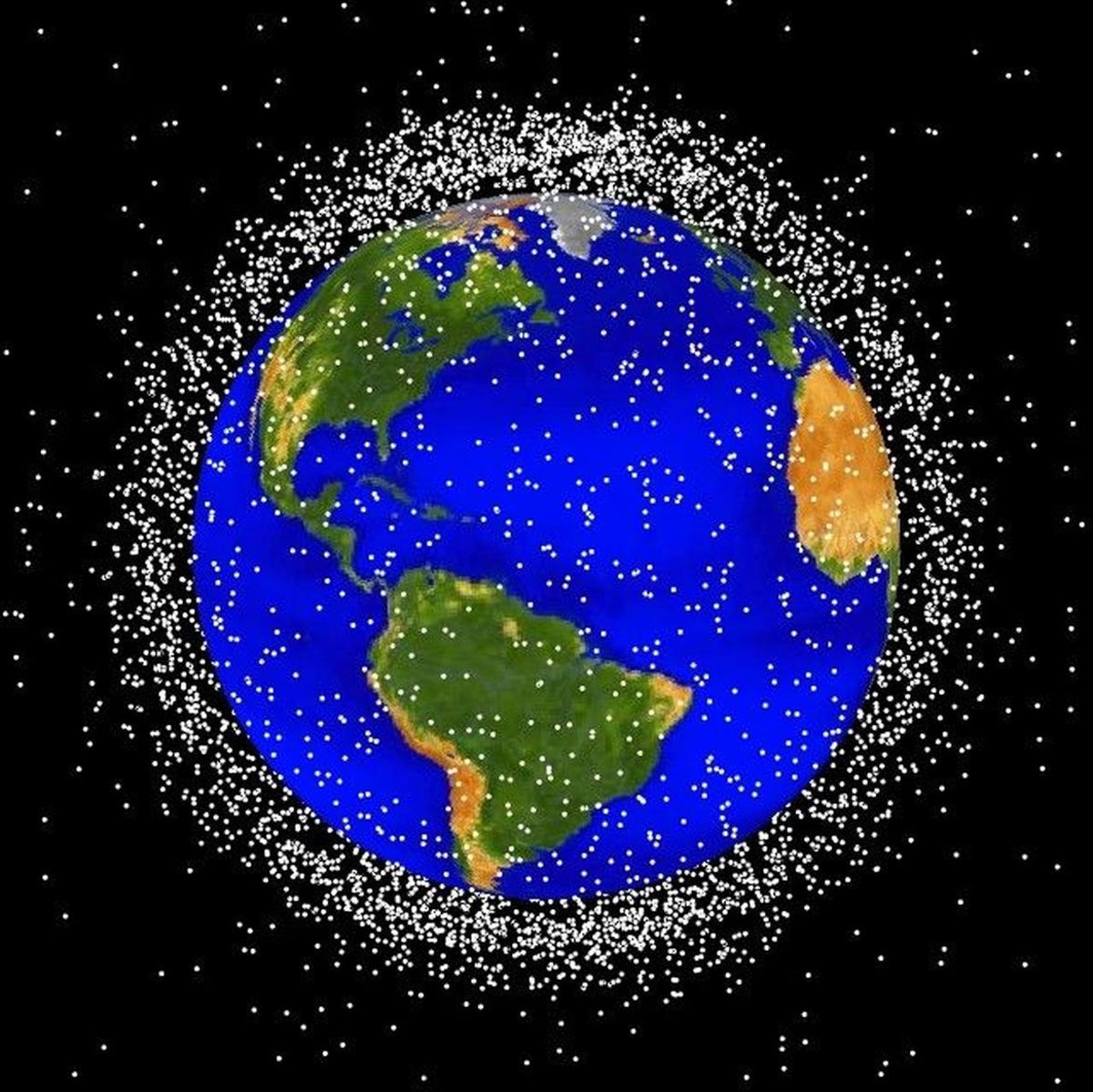Space junk: What happens when it crashes back to Earth? (pictures)
Millions of pieces of debris are floating in space right now. One in particular is set to return in a fabulous fireball.

Heads up: Here comes some space junk
Every week, some long-dead piece of space gimcrackery comes hurtling down from Earth's orbit -- an old piece of fuel tank, a fleck of paint. Most pieces of space junk burn up before we can have much fun with them. But one relatively small piece is set to make a spectacular return to Earth, re-igniting the conversation about what's gone up... and what's coming down.
WTF?
No, really, WTF. Or, more specifically: WT1190F. That's the name of that moving blob of light you're seeing here. It's a small piece of space junk expected to re-enter Earth's orbit November 13. Researchers from the Catalina Sky Survey are currently tracking it.
WTF we know about WTF
This particular piece of space junk (one of tens of thousands in its size range) is thought to be either hollow or a flat panel. If it's hollow, it may be a piece of an old fuel tank. It's been orbiting the earth at least since September 2009, possibly even earlier, though the chances of it coming from, say, the Sputnik era are pretty slim.
Dangerous junk
WT1190F is thought to be roughly one to two meters in size. But even tiny bits of space junk can cause big damage. Just take a good look at this historical image of space station Mir, whose solar panels had many unfortunate run-ins with small bits of space debris before the station was decommissioned.
Unsafe at any size
The small size of WT1190F isn't making earthbound observers any less wary. Even a fleck of paint in space can wreak significant damage. This is the one-millimeter-sized pit left by just such a fleck on a space shuttle flight in 1983.
Then again, could be worse
Very rarely, a serious hunk of junk (like this crashed PAM-D module found in Saudi Arabia) decides it's sick of orbiting and wants to come home. Often the debris re-enters the atmosphere in a remote place, or in a body of water.
Here's a rare hunk of junk
Close call? Here's a main propellant tank of the second stage of a Delta 2 launch vehicle which landed near Georgetown, Texas, in January 1997. Scary? Not really: The European Space Agency has calculated the annual risk of anyone being seriously injured by falling space junk at 1 in 100 billion.
That's more like it
Most often, we're dealing with centimeter-sized debris created from, say, aluminum oxide slag, a byproduct of solid rocket motors. This one survived re-entry from space. But...
All the pretty fireballs
...many smaller pieces of space junk end up as impressive fireballs streaking in from space...
Where WTF will land
Which brings us back to WTF. It's expected to return to Earth via impressive fireball just off the southern coast of Sri Lanka.
VIPs only
Hoping to get a glimpse of the estimated 8-second event? Might be tough unless you're above the cloud cover. An international group of space debris researchers has chartered a Gulfstream 450 jet to fly over the Indian Ocean to see what can be seen during that brief window.
The future of space junk
Not much of a threat is expected to come from WTF. But the threat of space debris is so real for workers aboard the International Space Station that a procedure is in place in case flying flotsam comes too close. On three separate occasions, the crew were directed to abandon work and take refuge in the Soyuz capsule after late debris-proximity warnings.
So what's a space debris scientist to do? Invent something to clean up that space junk.
Catching space junk
In response, the École Polytechnique Fédérale de Lausanne has revealed details of a plan to send a satellite into space to scoop up junk. Here's how it would look in action, based on an artist's concept drawing. The main target: The estimated 20,000 pieces of space debris that are thought to be larger than a baseball.
Or maybe we just need a giant net
The European Space Agency, meanwhile, is exploring ways to combat space junk via nets. ESA researchers have tested the use of tools similar to fishing nets as a possible way to catch potentially dangerous debris. Here's an artist's imagining of how such nets would work in space.
Or maybe we just need a Pac-Man in space
Another possible solution: Capturing the space junk, slinging it in a different direction (say, Earth, where it could burn up on re-entry) and using the momentum to move on to the next piece of debris. That's the concept, shown here, of Sling-Sat, the brainchild of a professor-student duo at Texas A&M University.